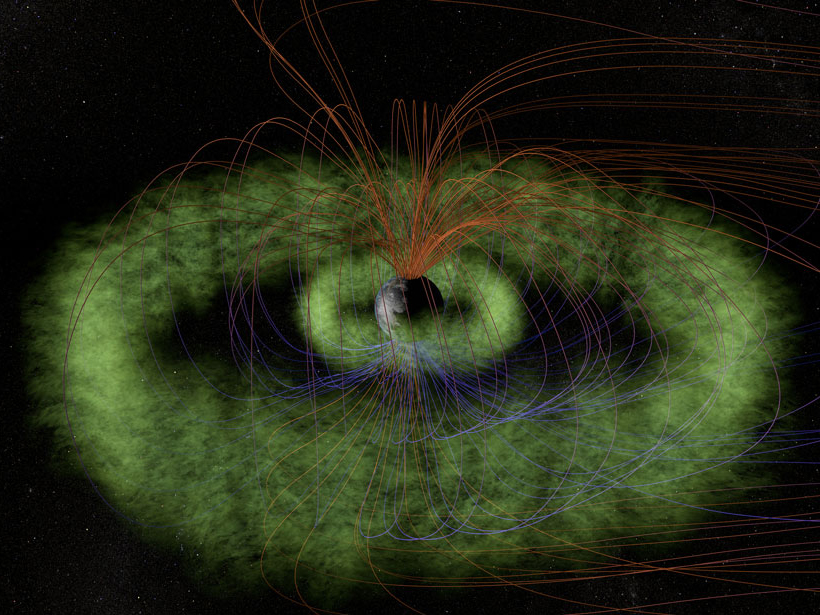Source: Journal of Geophysical Research: Space Physics
The defining scientific discovery of the early space age was the Van Allen radiation belts: regions of hazardous, highly energetic charged particles. They play a large role in space weather, swelling during geomagnetic storms, threatening satellites and sometimes astronauts. Yet almost 60 years after their discovery, scientists still don’t know how the belts are formed or what controls their shifting shapes, including the gap in between the belts, known as the “slot.”
Now a new study from Li et al. gives a comprehensive overview of how the dynamics of the belts depends on the plasma waves zipping through them. Their analysis of satellite data and computer simulations paint a complex picture of competing effects from different kinds of plasma waves, energizing some particles and kicking others out of the belts altogether.
It’s no surprise that plasma waves play a key role in the belts’ behavior. The plasma in space that surrounds Earth and envelopes the belts is like an ocean, heaving and buzzing with waves. But unlike ripples in water, which emerge only from the forces of gravity and buoyancy, plasma particles also respond to the electric and magnetic fields around them. As a result, there is a wide variety of plasma waves that move in different directions and affect particles differently as they move through them.
Some, like “whistler” waves, appear only in the outer belt and the slot. (Their name refers to the sound they make when heard over a radio receiver, remarkably like the dawn chorus of bird songs.) Others, like magnetosonic waves, can appear almost anywhere in the belts. Scientists aren’t sure which ones affect the belts the most.
To find out, the researchers used data from one of NASA’s Van Allen Probes, which were launched in 2012 to survey the belts. The team tracked the shifting size of the belts from 2013 to 2015 to see which types of plasma waves were present.
Their analysis shows that the waves that have the most impact are whistlers. These include chorus waves: When such waves pass through electrons, they push them to higher speeds—some close to the speed of light. These high-speed electrons populate the radiation belts, generating their dangerous radiation.
But they also found that another type of whistler plays a key role: “hiss.” These similar waves appear only closer to Earth, where the plasma density is greater. The team found that intense hiss scatters the fastest electrons out of the belts, creating the slot region in between them.
Compared to whistlers, magnetosonic waves don’t play as large a role, despite the fact they can appear anywhere in the belts. However, the team did find that they can accelerate some slower electrons to higher speeds, helping to repopulate some of the electrons ejected by hiss.
The team also replicated these behaviors with computer simulations of plasma waves. Together, all of these processes combine to generate the dynamic nature of the Van Allen belts. (Journal of Geophysical Research: Space Physics, https://doi.org/10.1002/2016JA023634, 2017)
—Mark Zastrow, Freelance Writer
Citation:
Zastrow, M. (2017), How “whistling” plasma waves shape Earth’s radiation belts, Eos, 98, https://doi.org/10.1029/2017EO074643. Published on 02 June 2017.
Text © 2017. The authors. CC BY-NC-ND 3.0
Except where otherwise noted, images are subject to copyright. Any reuse without express permission from the copyright owner is prohibited.

